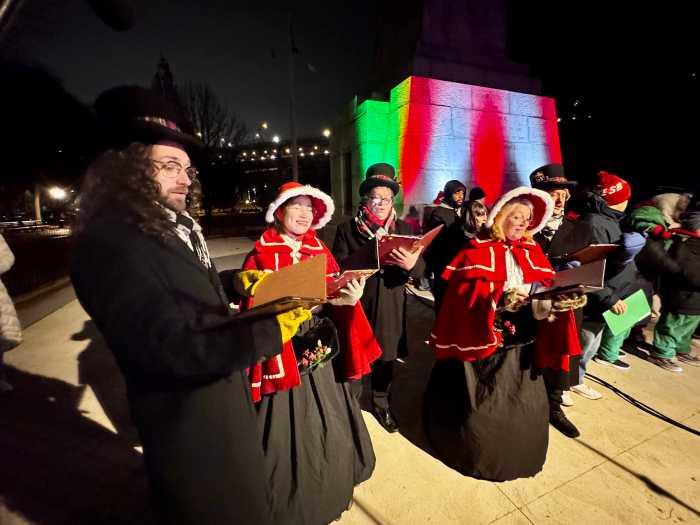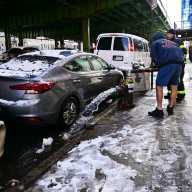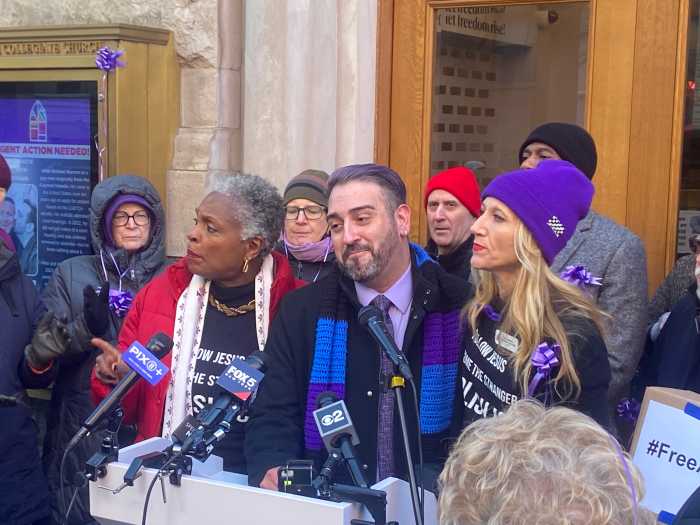All the attention in Coney Island may now be centered on new rides, hotels and condos, but a developing coalition of labor, clergy and community groups is speaking out and challenging the city to start seriously addressing the lack of an adequate affordable housing component in its redevelopment plan.
“We don’t want anyone to come into our community and destroy those who have worked, lived and who have lives and history here,” the Reverend Connis Mobley told a meeting of Coney Island CLEAR last week.
Coney Island CLEAR – Community and Labor Empowerment Alliance for Redevelopment – is calling for at least 50 percent of any new housing created under the city’s Coney Island Strategic Development Plan to be affordable to existing residents of Coney Island.
The group membership includes the Coney Island Gospel Assembly, United Neighborhood Services of Coney Island, United Community Baptist Church of Coney Island, the South Brooklyn Community Development Corporation and a number of local labor unions.
“We are going to make sure the Coney Island Development plan makes sense for everyone in the Coney Island community currently living and working in Coney Island,” Reverend Mobley told the roughly 50 people who turned out at the Coney Island Gospel Assembly on Neptune Avenue.
The shifting Coney Island Strategic Development Plan calls for between 4,000 and 5,000 new units of housing – only 900 of which is expected to be affordable through the Inclusionary Housing Program.
The Inclusionary Housing Program allows an increase in the floor area of residential developments in exchange for the provision of below-market-rate housing.
Reverend Mobley maintains that existing Coney Island residents should have the opportunity to better their situations and get first crack at those affordable units as a matter of “family development.”
The sense of urgency in Coney Island is great. Coney Island residents look around and see more landlords opting out of the Mitchell-Lama program and funding for NYCHA sites drying up.
“The time to speak on this and be upset is not when they put the shovels into the ground – it’s now,” said Brian Gotlieb, co-chair of Coney Island CLEAR’s legislative committee.
While many may have their own idea of what “affordable” exactly means, the organizers of Coney Island CLEAR define affordable housing as 30 percent of the average median income of those currently residing in Coney Island.
Recent figures published in the New York Times put Coney Island’s median household income at $22,739.
Housing advocates addressing those gathered at the Coney Island Gospel Assembly warned that the Section 8 housing program will be broke by September, and that buyers willing to shell out hundreds of thousands of dollars for new condos in Coney Island will only drive up rents for everyone else.
A new report by Rep. Anthony Weiner already finds that more New Yorkers are now paying 50 percent of their income on rent.
“Before we even start we have to secure hosing because without that we have nothing,” said Joe Packer, co-chair of Coney Island CLEAR’s community outreach committee.
The group plans to hold a town hall meeting at Reverend Mobley’s United Community Baptist Church at 2701 Mermaid Avenue on May 13 to discuss crafting a new community benefits agreement that will address the issue of affordable housing in Coney Island as well as other concerns.
“Coney Island CLEAR will only support a redevelopment plan that works for the greater gain of the community with no significant sacrifice for the existing community,” Reverend Mobley said.
In addition to truly affordable housing, organizers of the group say that any Coney Island redevelopment plan must also guarantee quality construction and opportunities for new jobs and careers.
“Successful projects only occur when the community is involved,” said Ed Lynch of the United Food and Commercial Workers and co-chair of Coney Island CLEAR’s legislative committee. “You are Coney Island, not [Mayor] Bloomberg. Nobody has a right to come here and tell you what to do with it.”
Gotlieb, whose early criticism of the city’s redevelopment proposal has been seen by some as something designed to benefit developer Joe Sitt – something Gotlieb denies – complained that the Bloomberg administration is moving ahead with the rezoning plan at “warp speed.”
“He wants his monument,” Gotlieb said. “The ULURP [Uniform Land Use Review Procedure] is expected this summer at Community Board 13. It’s coming.”
“All eyes are on us right now,” Reverend Mobley conceded. “We’re like fish in a fish bowl. Everybody is looking to see how they can gain one way or the other here in Coney Island.”
Nevertheless, the group’s organizers say that unity is needed to ensure that existing Coney Island residents are not cut out of redevelopment plans.
“They’re roll over us if we don’t get involved now,” Coney Island Gospel Assembly Pastor Constance Hulla warned.























